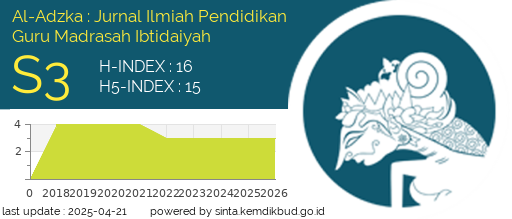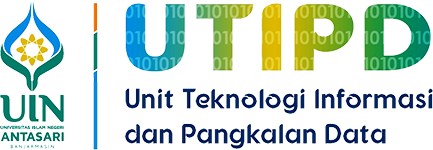Why is group physical activity better? Empirical Evidence from Indonesian Islamic Primary Students
DOI:
https://doi.org/10.18592/aladzkapgmi.v13i1.9134Keywords:
Personal Awareness, Group Norms, Social Support, Active Participation in Sports, Madrasah Ibtidaiyah (Islamic Primary School)Abstract
This study aims to generate correlational-predictive knowledge for active participation in voluntary sports of Madrasah Ibtidaiyah (Islamic Primary School) students in Indonesia. This secondary study utilizes one of the newest collections of big data at the Center for Physical Literacy and Sports Education Studies, Postgraduate School of IKIP Budi Utomo. Of the 6,576 respondents to the sports culture survey for Indonesian students, 335 of them were Madrasah Ibtidaiyah students. From the proposed causal model, personal awareness, group norms, social support, and active participation in voluntary sports were selected for further analysis. The path analysis strategy found that the direct contribution of personal awareness to active sports participation was insignificant (0.020). The contribution of personal awareness indirectly, through social support (0.022), with a significant total effect (0.042). The findings of this study support the proposition about the importance of group norms and social support in improving voluntary sports for madrasah students.References
Alghozi, F. Z. (2021). Hubungan Antara Aktivitas Fisik dengan Kebugaran Jasmani Peserta Didik Kelas Atas Di Sekolah Dasar Negeri Tambakrejo Tempelkabupaten Sleman.
Barnett, E., & Casper, M. (2001). A Definition of “Social Environment.” In National Institutes of Health. Health Disparities: Linking Biological and Behavioral MechanismsWith Social and Physical Environments (Vol. 91, Issue 3).
Bronfenbrenner, U. (2009). The Ecology of Human Development: Experiments by Nature and Design. Harvard University Press website.
Damayanti, R., Bekti, R. A., & Kurniawan, W. P. (2022). Tingkat Kebugaran Jasmani Siswa Kelas Atas pada Masa Pandemi Covid-19 di MI se-Kecamatan Wates. Jurnal Pendidikan Kesehatan Rekreasi, 8, 369–375. https://doi.org/10.5281/zenodo.6785350
Güngör, N. K. (2014). Overweight and obesity in children and adolescents. JCRPE Journal of Clinical Research in Pediatric Endocrinology, 6(3). https://doi.org/10.4274/jcrpe.1471
Hockings, P. (2015). Introduction: Style among Visual Anthropologists. In Visual Anthropology (Vol. 28, Issue 3). https://doi.org/10.1080/08949468.2015.1014271
Horne, C., Dodoo, N. D., & Dodoo, F. N. A. (2018). The Conditionality of Norms: The Case of Bridewealth. Social Psychology Quarterly, 81(4). https://doi.org/10.1177/0190272518804532
Johnson, M. B. (2012). Experimental Test of Social Norms Theory in a Real-World Drinking Environment. In Stud. Alcohol Drugs (Vol. 73).
Johnston, M. (2017). Secondary Data Analysis: A Method of which the Time Has Come. Qualitative And Quantitative Methods In Libraries. Qualitative and Quantitative Methods in Libraries, 3(619–626).
Kleinert, J., Ohlert, J., Carron, B., Eys, M., Feltz, D., Harwood, C., Linz, L., Seiler, R., & Sulprizio, M. (2012). Group dynamics in sports: An overview and recommendations on diagnostic and intervention. Sport Psychologist, 26(3), 412–434. https://doi.org/10.1123/tsp.26.3.412
López-Cañada, E., Devís-Devís, J., Pereira-García, S., & Pérez-Samaniego, V. (2021). Socio-ecological analysis of trans people’s participation in physical activity and sport. International Review for the Sociology of Sport, 56(1). https://doi.org/10.1177/1012690219887174
Maksum, A. (2008). Psikologi Olahraga: Teori dan Aplikasi. Unesa University Press.
Maksum, A., & Akbar, R. (2021). Laporan Nasional Sport Development Index Tahun 2021: Olahraga Untuk Investasi Pembangunan Manusia. https://www.researchgate.net/publication/359443662
Nicholson, A. N. (2017, February 3). Wakefulness, Awareness and Consciousness: The Neurosciences and the Practice of Aviation Medicine. CRC Press.
Nurcahyo, F. (2015). KAITAN ANTARA OBESITAS DAN AKTIVITAS FISIK. MEDIKORA, 1. https://doi.org/10.21831/medikora.v0i1.4663
Pedhazur, E. J. (1997). Multiple regression in behavioral research : explanation and prediction. Harcourt Brace College Publishers.
Pratama, A. R., Hamdani, R., & Krevai, C. K. (2021). Rehabilitasi Kardiovaskular pada Anak dengan Penyakit Jantung Bawaan. Jurnal Ilmu Kesehatan Indonesia, 1(3). https://doi.org/10.25077/jikesi.v1i3.102
Prince, K. R., Litovsky, A. R., & Friedman-Wheeler, D. G. (2012). Internet Mediated Research: Beware of bots. The Behavior Therapist, 35(5).
Rizal Fadli. (2021, December 12). Mengenal Protokol Kesehatan 5 M untuk Cegah COVID-19 . Halodoc.
Rohmah, L., & Muhammad, H. N. (2021). Tingkat Kebugaran Jasmani dan Aktivitas Fisik Siswa Sekolah. Jurnal Universitas Negeri Surabaya, 09(01).
Rosidi, S. (2022). MODEL TEORETIK PARTISIPASI OLAHRAGA : Pengantar Menuju Pemilahan , Pendalaman dan Pemilihan Teori Biologis Partisipasi Olahraga.
Rothan, H. A., & Byraredd, S. N. (2020). Rothan, H. A., & Byrareddy, S. N. (2020). The epidemiology and pathogenesis of coronavirus disease (COVID-19) outbreak. Journal of autoimmunity, 102433. Journal of Autoimmunity.
Sallis, J. F., Cervero, R. B., Ascher, W., Henderson, K. A., Kraft, M. K., & Kerr, J. (2006). An ecological approach to creating active living communities. In Annual Review of Public Health (Vol. 27). https://doi.org/10.1146/annurev.publhealth.27.021405.102100
Streiner, D. L. (2005). Finding Our Way: An Introduction to Path Analysis. In Can J Psychiatry (Vol. 50, Issue 2).
Taylor, S. E., Sherman, D. K., Kim, H. S., Jarcho, J., Takagi, K., & Dunagan, M. S. (2004). Culture and social support: Who seeks it and why? In Journal of Personality and Social Psychology (Vol. 87, Issue 3, pp. 354–362). https://doi.org/10.1037/0022-3514.87.3.354
Wang John C. K., Lim B.s.C., Wee Shiou-Liang, & Soon F. M. (2011). Development Of An Inventory For Measuring Sporting Culture. International Journal of Asian Society for PE, Sport & Dance, 9, 44–53.
Zulkarnain, W. (2013). Dinamika Kelompok: Latihan Kepemimpinan Kependidikan. Bumi Aksara.
Downloads
Published
How to Cite
Issue
Section
License
Copyright (c) 2023 Mohammad Nurkhozien, Sakban Rosidi, Agung Yuda Aswara, Adi Sucipto

This work is licensed under a Creative Commons Attribution 4.0 International License.
Authors who publish with this journal agree to the following terms:
- Authors retain copyright and grant the journal right of first publication with the work simultaneously licensed under a Creative Commons Attribution 4.0 International that allows others to share the work with an acknowledgement of the work's authorship and initial publication in this journal.
- Authors are able to enter into separate, additional contractual arrangements for the non-exclusive distribution of the journal's published version of the work (e.g., post it to an institutional repository or publish it in a book), with an acknowledgement of its initial publication in this journal.
- Authors are permitted and encouraged to post their work online (e.g., in institutional repositories or on their website) prior to and during the submission process, as it can lead to productive exchanges, as well as earlier and greater citation of published work.












